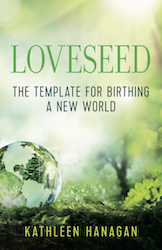
“In an age where there is so much talk about ‘being yourself,’ I reserve to myself the right to forget about being myself, since in any case there is very little chance of my being anybody else.” Thomas Merton
I love that quote by Thomas Merton! How can we possibly be anything but ourselves?! And yet, most adults have experienced an identity crisis at least once if not several times before the age of 30. The term “identity crisis” first came from developmental psychologist and psychoanalyst Erik Erikson. Erikson introduced the ideas of adolescent identity crises as well as midlife crisis, believing that personalities developed by resolving crises in life.
Erikson’s developmental stages
Erikson believed that personality develops in a predetermined order through eight stages of psychosocial development, and that during each stage, the person must resolve a crisis which impacts the future development of the personality.
According to Erikson, successful completion of each stage helps to develop a healthy personality and the acquisition of basic virtues, which are strengths which the ego can use to resolve subsequent crises.
|
Stage |
Psychosocial Crisis |
Basic Virtue |
Age |
|
1. |
Trust vs. Mistrust |
Hope |
0 – 1½ |
|
2. |
Autonomy vs. Shame |
Will |
1½ – 3 |
|
3. |
Initiative vs. Guilt |
Purpose |
3 – 5 |
|
4. |
Industry vs. Inferiority |
Competency |
5 – 12 |
|
5. |
Identity vs. Role Confusion |
Fidelity |
12 – 18 |
|
6. |
Intimacy vs. Isolation |
Love |
18 – 40 |
|
7. |
Generativity vs. Stagnation |
Care |
40 – 65 |
|
8. |
Ego Integrity vs. Despair |
Wisdom |
65+ |
I really appreciate Erikson’s work, and it is a beautiful template, with a great deal of wisdom underlying its premises, yet I don’t believe it describes the reality of what actually happens for the utterly complex creatures that human beings are. Just as we have now begun to realize the fluidity of gender, it is important to see identity as an utterly fluid reality that is affected by the powerful currents of transformation that are coursing through the lives of everyone on this beautiful planet. ![]() And the question of one’s identity and a subsequent “crisis” can arise at any time.
And the question of one’s identity and a subsequent “crisis” can arise at any time.
And the good news is that no matter which of Erikson’s stages you may have failed to successfully complete, you can do so at any stage of your life. I have heard so many stories of people in their 80’s finding the first true love of their lives. I have worked with countless people who had no reason to trust a single human being, who have been able to develop deep trust in themselves, others, and life itself.
Identity and purpose
The intense yearning to know one’s purpose is one of the great issues of our times for people of all ages, which was not such a common challenge 50 or even 20 years ago. Purpose and identity are often inextricably connected for people, so not knowing one’s purpose can trigger a crisis of identity.
The word identity means “sameness, oneness, state of being the same,” from Middle French identité (14c.). Erickson describes identity as “…a subjective sense as well as an observable quality of personal sameness and continuity, paired with some belief in the sameness and continuity of some shared world image.”
In today's rapidly shifting world, identity crises are more common than in Erikson's day, and people tend to experience them at various points throughout life, particularly at points of great change such as starting a new job, the beginning of a new relationship, the end of a marriage, or the birth of a child. You find yourself exploring different aspects of yourself as the sameness is no longer there and you become temporarily unmoored and confused.
Researcher James Marcia has expanded upon Erikson's initial theory, and says that the balance between identity and confusion lies in making a commitment to an identity. He describes four different identity statuses:
- Identity achievement occurs when an individual has gone through an exploration of different identities and made a commitment to one.
- Moratorium is the status of a person who is actively involved in exploring different identities but has not made a commitment.
- Foreclosure status is when a person has made a commitment without attempting identity exploration.
- Identity diffusion occurs when there is neither an identity crisis or commitment
The research shows that people who have made a strong commitment to an identity tend to be happier and healthier than those who have not. I believe that is because the commitment lifts you out of the “crisis” which is always at least somewhat painful and turbulent.
Seeing yourself in the mirror
The real crisis of identity happens when you look into the mirror and who you see isn’t the person you truly are. My experience is that far more people tend to entirely underestimate their personal power and gifts, rather than overestimating them. They argue, often unconsciously, for their limitations, rather than seeing who is truly there.
One of the most powerful exercises I recommend clients doing (and that I do myself on a frequent basis) is to do some mirror gazing, where you look deeply into the reflection of you in the mirror, with the intention to let any judgments go. This is very important—letting all judgments go—-as the purpose is not to focus on blemishes or wrinkles, but to connect to your own light, which you do by looking deeply, with awareness, into your own eyes—into the essence of you. You are a prism through which and out of which light pour through.
No matter what identities you claim in the outer world, and no matter who others think you are, seeing the you-ness of you is the immediate experience of what is real in you. You may be surprised at what you see. You may see sadness, you may see peace, you may see fear—qualities of your own presence at this time. No judgment—and if you can, deep compassion.
This is especially beautiful and powerful to do when you are experiencing one of those identity crises that seem to be a part of human living. While everything is changing around you, seeing what is real in you can (without judgment) can be stabilizing and reassuring.
May I experience the beauty of my own presence.
May I know myself as a prism of light.


